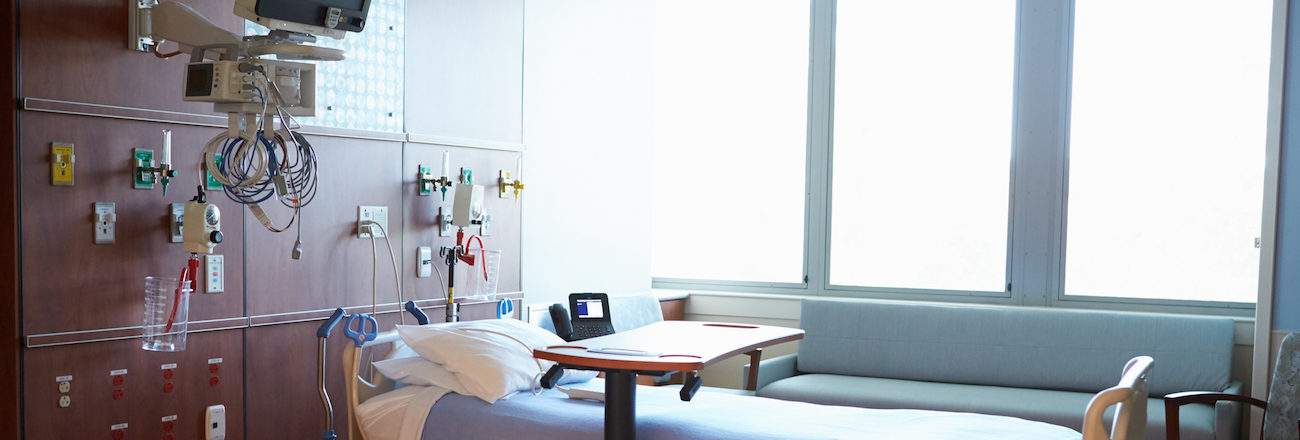Chilled beams are an alternative to a conventional fan coil HVAC system, designed to heat or cool buildings. Put simply, pipes of water are inside a beam suspended a short distance from the ceiling of a room. As the beam chills the room’s air around it, it becomes denser and falls to the floor.The warmer air on the floor moves up from below, causing a constant flow of convection that cools the room. This particular type of beam is called passive. An active beam facilitates room air circulation through the induction process of a medium pressure ventilation air stream.
Since this process uses the natural interaction of cool and warm air, or energy from a inherently present ventilation stream, it saves energy compared to today’s traditional HVAC systems. That can lower operating costs, which is particularly important for hospitals, which operate 24/7 and use tremendous amounts of energy.
ASHE (AHA’s American Society of Healthcare Engineers) is currently in the process of looking at how chilled beam technology can work in a healthcare setting, now that ASHRAE 170, Addendum h permits active chilled beams for the secondary air movement in patient rooms. Chilled beams have been used in Europe for years; in the U.S., the only known installations are at University of California Davis School of Medicine (a relatively hot, dry climate) and at Yale University Hospital (a mild and somewhat humid climate). Our research on the performance of chilled beams is being conducted in warmer and more humid climates, such as Holston Valley Medical Center in Kingston, Tennessee—theoretically one of the more challenging places for chilled beams due to the high level of humidity, which could produce condensation on such a system.
Our initial applied research, undertaken in February 2012, has proven that energy-saving chilled beam systems can save energy and improve patient comfort even in a the humid areas of the Southeast. The energy savings was assumed based on the elimination of the fan coil motor once the dedicated outdoor air system dehumidification cycle and neutral air modifications were completed. Note: warmer chilled water temperatures to the beam would also provide energy savings, but were not anticipated to be quantified. What’s more, chilled beams, because they reduce many of the moving parts of traditional HVAC systems, may reduce labor and maintenance costs.
Our initial findings also seem to point to better comfort around patient beds, since the movement of air around the patient bed is increased with a chilled beam system compared to traditional overhead distribution. With traditional HVAC systems, you often find a disparity between what the room thermostat reads and the actual temperature of air around a patient’s bed. Chilled beams may provide the opportunity to give you more accurate and comfortable temperatures not just at the thermostat, but at the patient’s bed, where temperature and comfort really count.
Overall the success of the installation was measured by comparison of the performance of the existing fan coil systems. Not a single patient comfort complaint has been recorded on satisfaction scores or reported to the maintenance staff. The hospital has decided it would be affordable for a larger scale implementation on the campus and has confirmed first and life cycle cost saving as part of the test.
The following quote of a summation of the endeavor provided by the Wellmont Health Vice President, Jim Moore:
“Given the immense cost pressures to deliver healthcare today, we absolutely need to take advantage of technologies, such as chilled beams, that reduce first, energy, and life cycle costs within our facilities.”
– Jim Moore, CHFM, SASHE, V.P. Facilities Wellmont Health System
Interested in what you see? Subscribe to receive monthly news and information
more tailored to what you need.

